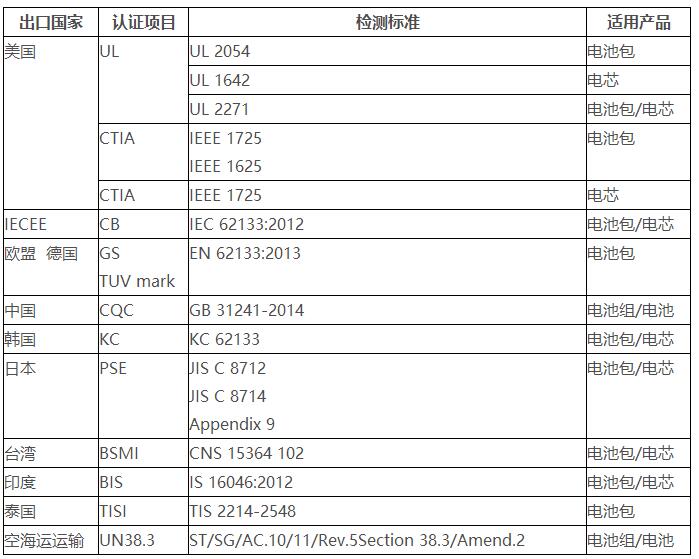Basic introduction
Lithium iron phosphate battery packs have been widely used in various areas of life in recent years. The volume energy density is getting higher and higher, the capacity is getting larger and larger, and safety is getting more and more attention. The safety performance test of lithium batteries is particularly important. Lithium batteries have frequent safety accidents in electric vehicle power batteries. How to solve the hidden dangers of lithium battery packs has been a hot topic in the industry. Today North Test will introduce the safety test items and standards for lithium batteries.
National certification standards
Security test method
1.Low pressure
Test purpose: The low-pressure test is used to simulate the impact of low-pressure conditions on the safety of lithium iron phosphate battery packs during air transport. After the test, the sample should not fire, explode, or leak. Equipment: such as vacuum box (or low pressure test box), charge and discharge tester, etc.
2.Temperature cycling
Test purpose: The temperature cycling test of lithium batteries is used to simulate the safety of lithium-ion batteries during repeated exposure to low and high temperatures during transportation or storage. The tests are performed using rapid and extreme temperature changes. After the test, the sample shall be free from fire, explosion, and leakage. Equipment: such as temperature test box, charge and discharge tester, etc.
3.Vibration
Test purpose: This test simulates vibrations during transportation and carrying, which should not cause safety problems such as leakage, fire and explosion of lithium ion batteries. Equipment: such as vibration test bench, charge and discharge tester, etc.
Safety test standards
1. Extrusion test:
Place the fully-charged lithium battery pack on a flat surface and apply a 13 ± 1KN squeezing force from a hydraulic cylinder. The battery is squeezed by a 32mm diameter steel rod plane. Once the squeezing pressure reaches the maximum, stop squeezing, the battery No fire, no explosion.
2. Impact test:
After the battery is fully charged, place it on a flat surface, place a steel column with a diameter of 15.8mm vertically on the center of the battery, and freely drop a weight of 9.1kg from a height of 610mm onto the steel column above the battery. Lithium battery packs should not ignite or explode.
3. Overcharge test:
The lithium battery is fully charged with 1C, and the overcharge test is performed according to 3C overcharge and 10V. When the battery is overcharged, the voltage rises to a certain voltage and stabilizes for a period of time. When the battery voltage approaches a certain time, the battery voltage rapidly rises. When the battery voltage rises to a certain limit, the battery The high cap is pulled off, the voltage drops to 0V, and the lithium battery can be fired or exploded.
4. Short circuit test:
After the battery is fully charged, the positive and negative electrodes of the battery are short-circuited with a wire having a resistance of not more than 50mΩ, and the surface temperature of the battery is tested. The maximum surface temperature of the battery is 140 ° C. The battery cap is pulled open, and the battery does not ignite or explode.
5. Acupuncture test:
Place the fully charged battery on a flat surface, and pierce the battery in the radial direction with a 3 mm diameter steel needle. The test lithium battery pack will not ignite or explode.
6. Temperature cycle test:
The temperature cycling test of lithium-ion batteries is used to simulate the safety of lithium-ion batteries during repeated exposure to low-temperature and high-temperature environments during transportation or storage. The tests are performed using rapid and extreme temperature changes. After the test, the sample shall be free from fire, explosion, and leakage.
Our advantage
 Hot Line
400-800-6106
Hot Line
400-800-6106

